News
Red Cloud and His War: Part One.
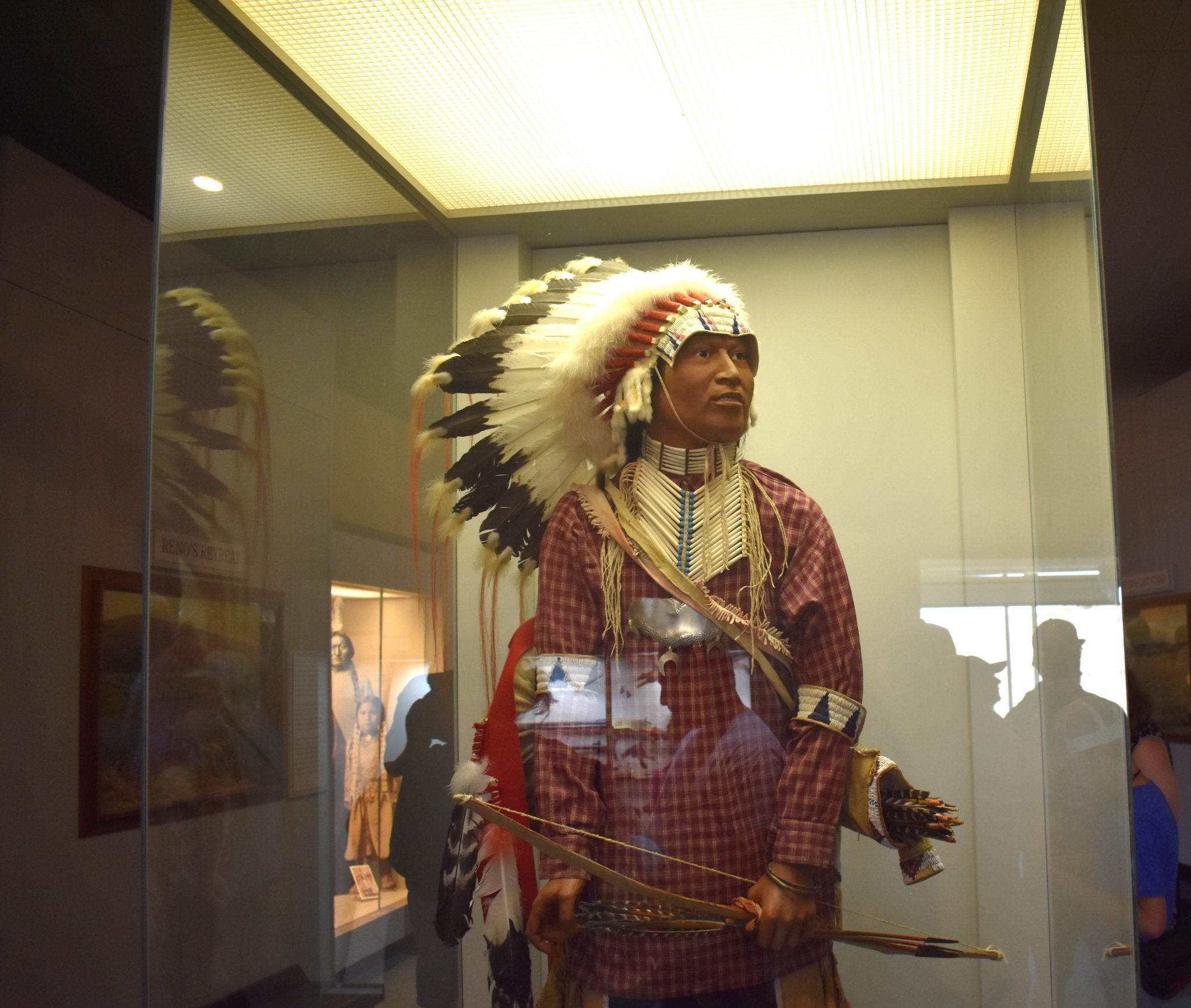
A Plains Indian warrior (a display at the Custer Battlefield Museum)
Red Cloud, in Lakota, Mahpíya Lúta was born in 1822, and was an important leader of the Oglala Lakota during the years 1868 through the early 1900s. This will be part one of a two-part series about the Lakota chief.
Red Cloud was more of a political leader than a leader in battle. He gathered the tribes to together, and later went to Washington to speak for the Indians.
Although the U.S. Government often assumed that there was one leader for all the Lakota, this wasn’t the case. There were several major divisions among the groups of Indians. Red Cloud, however, was accepted by many of the groups as a great leader, and they would listen to him in council.
In a lengthy article from The Wyoming Industrial Journal, December 1, 1909, it talks about Red Cloud.
Red Cloud was not a hereditary chief of his tribe but made himself leader by sheer force of character and it is said regarding the war known as the Red Cloud War that it is the only instance in the history of the United States in which the government has gone to war and afterwards made peace conceding every thing demanded by the enemy and exacting nothing in return.
Red Cloud was an Ogalala Sioux, which was a branch of the Sioux nation that lived on the buffalo ranges west of the Black Hills. Prior to 1886 they had not joined the other Sioux in making war on the white settlers, but about that year Red Cloud became prominent with ten other subchiefs and was recognized by Gen. Harney as the leading chief of the Ogalalas.
Under Colonel Sawyer in 1865 the government attempted to build a wagon road by way of Powder River Valley to the gold mines in Montana and Idaho. This road ran through some of the richest buffalo ranges left to the Sioux Indians.
In the fall of 1865, Commissioners attempted a treaty with the Indians and secure their consent to the building of the road. Red Cloud was the only chief who refused to attend the council. At Fort Laramie in June, 1866, he attended council and there mildly but firmly told the commissioners that the last hope of subsistence of the Ogalas lay in preserving the buffalo, and under no consideration would they consent to the opening of the road through the Powder River country.
While he was speaking General Carrington arrived with strong force of soldiers. “Why do these soldiers come?” asked Red Cloud. “To build forts and open Montana,” was the reply. Red Cloud sprang from the platform and catching up his rifle, cried: “In this and the Great Spirit trust for the right.” Red Cloud called his fellows and from that time began a war, which lasted for years.
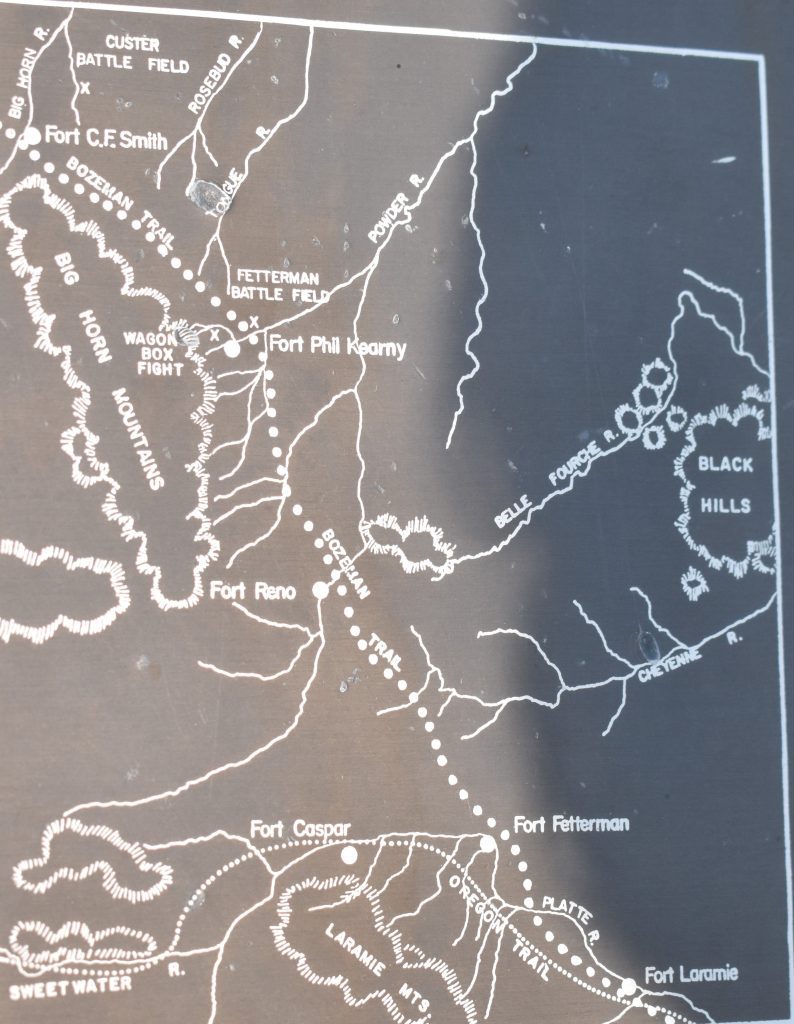
In The Cheyenne Leader, June 6, 1868: A Glimpse Behind the Scenes. Our dispatches from the east have announced that Sanborn, President of the Indian Peace Commission, had telegraphed to the Department at Washington that Red Cloud had signed the treaties at Laramie, which from reliable information, we believe to be incorrect. Red Cloud did not attend the council. He sent in several messengers bearing commands to the Commissioners, but he did not appear. “He sent them this message: You said you would move the forts when the grass came — when the grass entire you said you would move them when it was so big, oxen could eat it— but now the grass is big for oxen, and you say— ‘move ’em by and by.’ You move the forts away, and there shall there be peace. Red Cloud will then fight the Crows, the Blackfeet, Arapahos or Cheyennes.”
This was Red Cloud’s message. There were about 2,000 Indians at the council, When Man-afraid-of-his Horses signed the treaty, he insisted on having one of the sutlers sign with him. After the two worthies had affixed their autographs to the document, the chief asked his white friend if he (the sutler) would surely “go straight.”
Upon being assured he intended to run a transit line of rectitude in his future negotiations with Indians, the chief said, “I stole some mules from you and the government has paid you for them, but I will give you back a portion of them for friendship and then we will be all right again.” This proposition was agreed to, and everything immediately assumed an air of superlative loveliness.
Now government has sent out into the heart of the Sioux tribe trains consisting of several hundred draft animals, and if the followers of Red Cloud fail to capture a good portion of them we may look for a peace of some duration.
The fact is, Red Cloud is the supreme ruler of all the Indians between the Platte and Missouri rivers, and though all but he might sign treaties, one word from him for war would dispel all their recollections of promises of peace. We do not wish to unnecessarily agitate the Indian question, but as the reappears to have been an error in the reports which have been made of the council at Laramie, we give the above as the plain facts, over which a romantic official statement might be thrown. Stripped of its veil of official nonsense, it is really no treaty at all. The signers of it do not consider them selves responsible, but sign because their chief is at present indifferent to what they do, knowing that at any moment by a single word he can undo it all.
Red Cloud and his tribe did a great deal of trade with the whites, especially during the winter when game was scarce. Sometimes, his arrival at Fort Laramie came as a surprise.
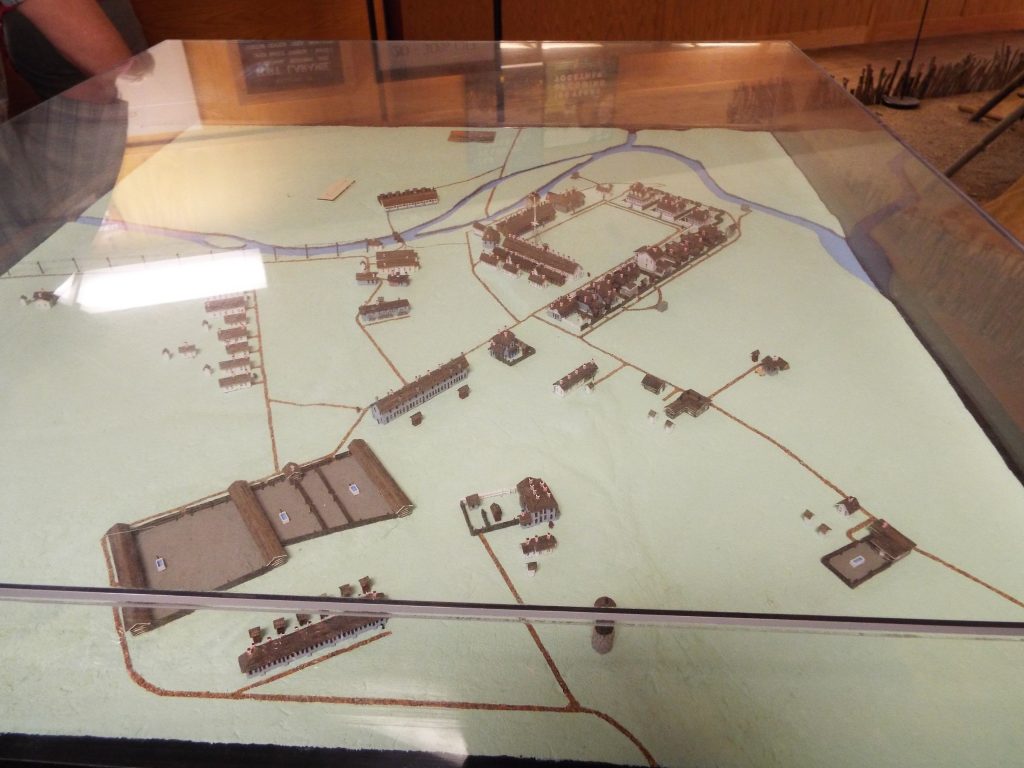
The Wyoming Weekly Leader, April 3, 1869: Red Cloud at Laramie. — On Wednesday morning last, at roll call, Fort Laramie was not a little surprised to find Red Cloud and five hundred of his merry men with bows strung and mounted on ponies, in occupation of the parade ground. There they stood, the five hundred, in close order and motionless. On the surrounding hills, overlooking the Fort, were thousands of Red Cloud’s faithful followers, while the plains were black with droves of ponies quietly grazing.
Fort Laramie was not only surprised but astounded. The commanding officer, having been speedily apprised of the situation, at once ordered light pieces of artillery to be charged and ranged to cover the impressive five hundred, that during the darkness, had rode unsuspected into the parade ground. An interpreter was then dispatched to learn the object of these mysterious maneuvers.
Red Cloud sent answer back “we want to eat.” A parley ensued, when the great Sioux chief stated his people were suffering for food and must have it. He had no desire to fight, as might be seen. He could easily have captured the whole garrison but that was not his objective. After some further talk, Red Cloud was induced to order his warriors to camp and send his women in for provision.
When asked why he didn’t go to the Missouri to trade, Red Cloud answered he “didn’t belong on the Missouri. He was born here, had always traded here and always would trade here.” (Before it became Fort Laramie, it was a trading post, established in 1834)
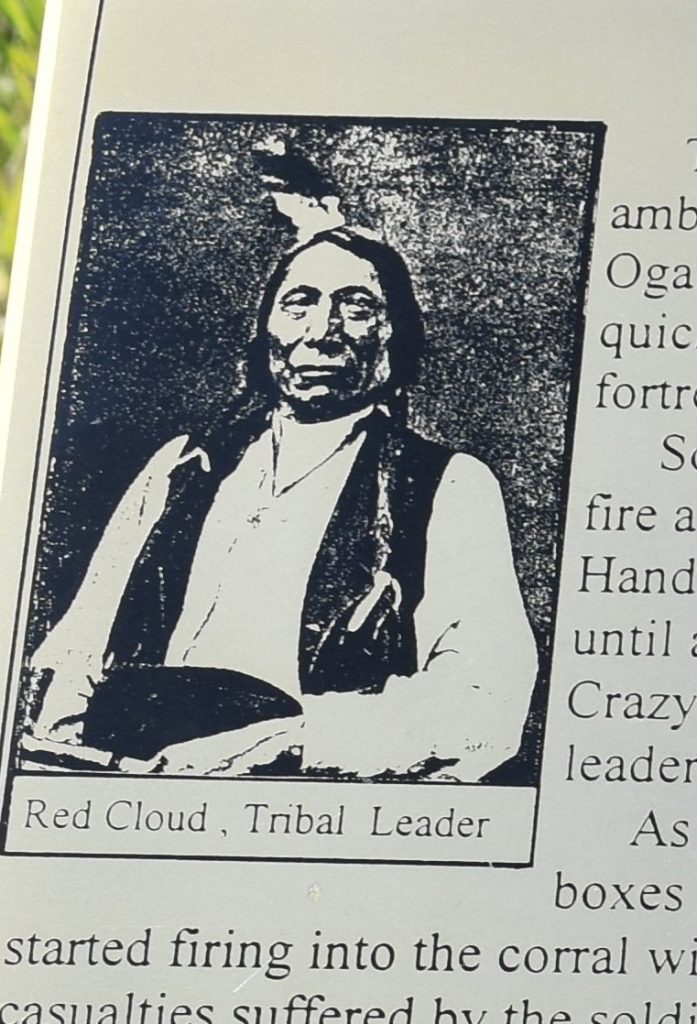
So it was settled that Red Cloud would set a guard about his camp to prevent his warriors going in to the fort, and the women should exchange their surplus ponies, of which they had in abundance, and their robes and skins of which they had but few, for such goods as they most required. The total number of Indians now at Laramie, under Red Cloud, is said to he not less than six thousand. There is no apprehension of trouble with them at present.
From the above quoted Wyoming Industrial Journal, December 1, 1909: During the construction of Fort Kearny at the foot of the Big Horn Mountains, Red Cloud constantly harassed General Carrington and his garrison, and by 1866 had assembled an army of not less than 3,000 men with their families. At this time it is said that Red Cloud’s force was better equipped than were the soldiers of Uncle Sam.
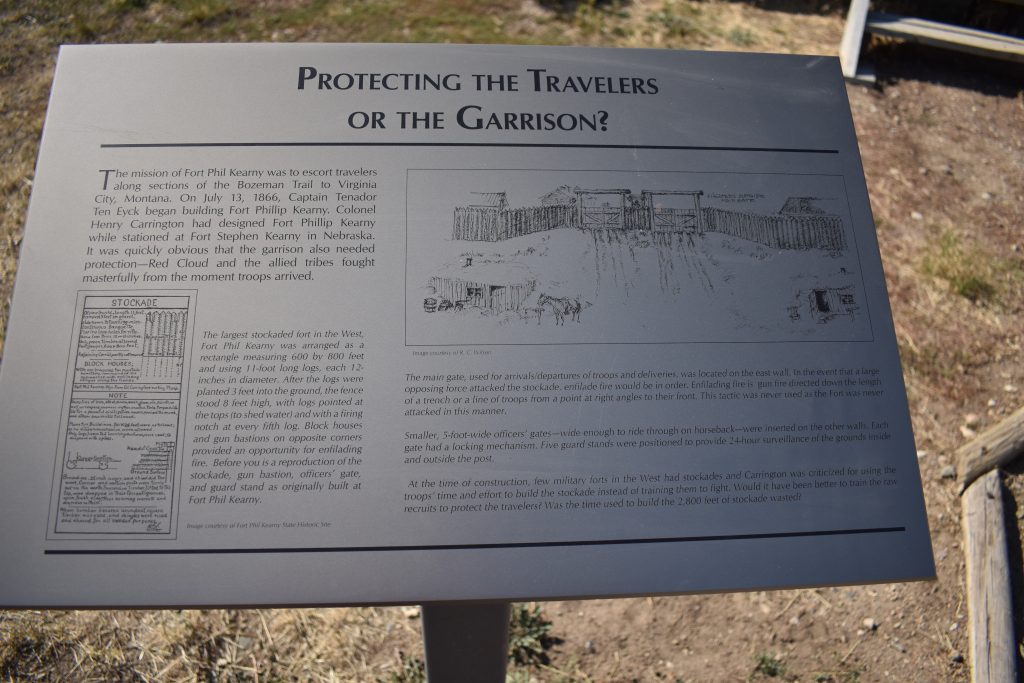
In the book by Margaret Carrington, Col. Carrington’s wife, “Absaraka Home of the Crow,” she mentioned that an Indian with a bow and a quiver of arrows could fire more rapidly than a soldier with a revolver.
The Journal: In December Captain Fetterman and his men were led into an ambush; and every man killed. Another fierce battle took place at what was known as the wood yard in August, 1867. So successful had Red Cloud been in his campaign that the people began to awaken to the fact that the chieftain was fighting for principle.
The president sent commission consisting of Generals Sherman, Terry and Augur to meet with Red Cloud, who refused to meet, them, but through “Man-Afraid of-his-Horses” informed the commission that the war was being waged to keep the whites out of the Powder River valley and save it as hunting ground for the Indians, and that the war should cease as soon as the garrisons at Forts Kearny, Smith and Reno were withdrawn. He declined to meet the commission in council and stated that he would perhaps do so the following spring or summer.
Although Red Cloud did not attend the meeting the next spring, he did win his contention, at least for a time, when on April 29, 1868, treaty was signed by which all troops were withdrawn from Forts Kearny Smith and Reno and all attempts to open the Montana road were abandoned. The tribes were given a great reservation, extending from the mouth of the Niobrara River west to the Big Horn mountains, to the Yellowstone, thence east to the Cannonball, to the Missouri and down to the Niobrara.
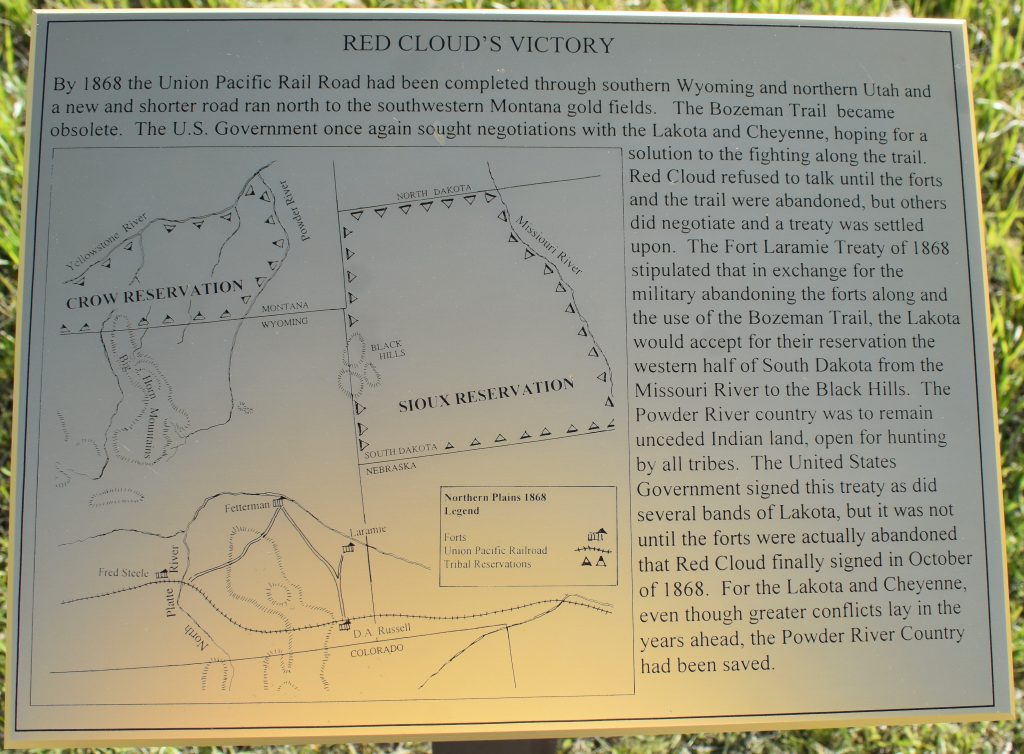
This is part one of a two-part story about Red Cloud and Red Clouds War. Part two will be posted next Saturday.


Mark Steingass
July 23, 2022 at 9:16 am
…interesting article…all part of a “great history”…
Shelly J Morris
July 23, 2022 at 11:02 am
This was a fascinating read. Thanks for keeping all the
Indian history alive for future generations to learn from.